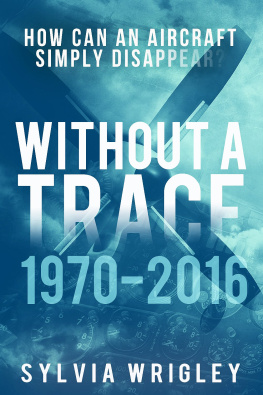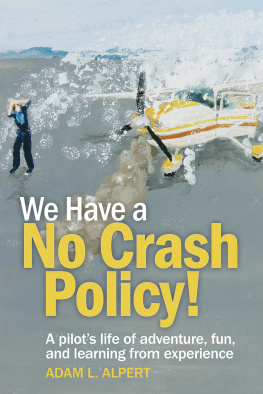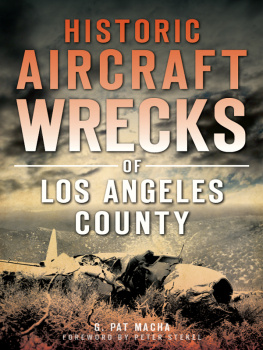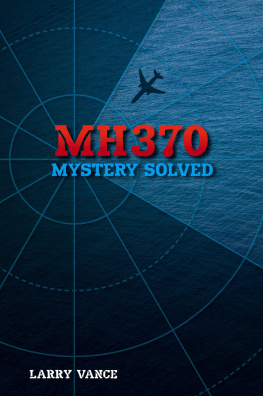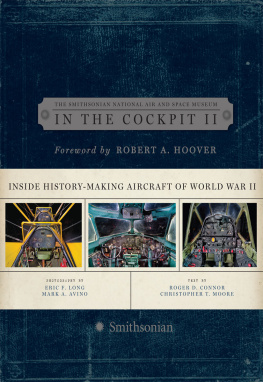
WHY PLANES CRASH
Case Files: 2003
SYLVIA WRIGLEY
Why Planes Crash Case Files: 2003
2016
UUID# 61C05412-D5D1-43C0-8740-4F2E1B169638
ALL RIGHTS RESERVED
Copyright 2016 by Sylvia Wrigley
Cover Design by Alisha at Damonza.com
No part of this book may be reproduced or transmitted in any form or by any means, electronic or mechanical, including photocopying, recording, or by any information storage and retrieval system, without permission in writing from the author.
For information address:
Editing and interior design by:
EQP BOOKS
The name EQP BOOKS and the logo consisting of the letters EQP over an open book with power cord are registered trademarks of EQP Books.
http://EQPBooks.com/
Acknowledgements
T HANK YOU, as always, to Cliff Stanford, both for introducing me to flying and for never balking when my enthusiasm overflowed. Thank you also to Laurel Amberdine and Deborah Walker, who nagged supported me when it seemed like the book was taking too long to finish.
The presentation of the crashes and in fact the structure of the entire book was endlessly improved in response to excellent feedback from Cliff Stanford, James Noble, T. Jane Berry, Eadin Brown, Brenta Blevin and Gwen Hill. Any remaining mistakes are completely my fault for not listening well enough.
The cover was designed by Alisha at Damonza.com.
Id like to extend a special thank you to Geoff Collins, Huy Do, Manuel Dohmen, Alain Durand, Mike Kay and Michael Kelly for making their photographs available to me as a part of this book.
Thank you also to PPRuNe and r/aviation for offering endless discussion and inspiration.
This is the third book in the Why Planes Crash series. For more information about the books or the author, please see http://planecra.sh/. You can sign up for updates on when the next book is due to be released at http://planecra.sh/notify/.
When you finish the book, please leave a review! Ill send you a free copy of any other book in the series if you email me at with a link to the review you wrote for this one.
CONTENTS
O CCASIONALLY , SOMEONE refers to this series as giving insight into the problems that plagued aviation in a particular year. This is most certainly not true. I choose the most interesting accidents and incidents, each of which highlights a different aspect of aviation. I always look to have a mix of locations, aircraft types and flights, rather than just focus on the big name commercial jets that crashed in the US and made the mainstream news. If I were to try to show typical aviation, the book would be full of general aviation pilots going out in bad weather and crashing into unexpected terrain. It would include a lot of minor issues that are aggravating but not that interesting to explore. In 2003, there would have been a dozen chapters on weight and balance issues, which seemed to plague the industry. My focus for each book has been to offer a variety of examples that help us to explore as many different aspects as possible of a single question. Why do planes still crash?
There are trends, of course, and some issues still stand: most accidents occur during take-off and landing, most accidents occur as a result of a number of issues as opposed to a single cause, systemic weaknesses generally lurk at the heart of major catastrophes. At some point, someone (the pilot, the maintenance person, the inspector, the author of the aircraft manual) makes a mistake or takes a shortcut, and this sets up a scenario that, eventually, combines with other shortcuts and mistakes until an incident is all but inevitable. Only very rarely is the accident an extreme event which could not possibly have been foreseen.
Thus, the book looks at a variety of different causes, rather than the most typical scenarios, so that we can gain understanding of the spectrum of how crashes happen and why they happen in an industry with a huge focus on safety and security.
Obviously, I cant possibly select all the different types of accidents that could occur but I hope you will find that this edition includes a cross-section of incidents, some of which were easily avoided and others impossible to see coming. Sometimes a single action changed everything, or could have. Dismissing accidents as "pilot error" betrays a fundamental misunderstanding of how accidents are constructed: the pilot is generally the last barrier between an incident and an accident. He or she ends up as the final active participant in an extremely complex system, which is why the pilots action (or lack of it) is often the demonstrable cause. The contributing factors often include an instigating action which happened long before the flight, and it is there where we have the most opportunity for improvement. It is important to focus on how the accident could have been avoided despite human error, rather than succumb to the temptation to allocate blame.
A quick note about measurements: Modern aviation uses both imperial and metric systems based on the location of the flight. In the past, I have listed multiple measurement systems along with conversions. However, it has bothered me that the page often appears as some sort of textbook with a long blur of numbers that the reader is expected to memorise. So this time, I have simplified this to offer conversions only when it is critical to the incident and thus important for the reader to know the distance or speed or depth involved. If it isnt particularly relevant, I simply list the measurements in the system used in the accident report, thus US reports cite feet, pounds and gallons while Russian reports refer to metres, kilograms and litres. Where an understanding of the measurements involved are required, I have done the conversions, so you should never have to look something up. However, where it is a simple issue of comparison, I have not. I hope that you will find the reports more readable, not less, as a result of this stylistic choice.
As always, I love to hear from you. If you would like to comment on this or any other aspect of the book, please feel free to email me at . You can also simply send the phrase "crash update" and Ill make sure you get notified when the next book in the series is completed (Im starting work on it now!).
The Unstallable Plane that Stalled
T HE C ESSNA 185 S KYWAGON is a high wing, single engine aircraft: basically a Cessna 180 with six seats, a strengthened fuselage and a slightly more powerful engine. Its a popular aircraft in remote areas where access to modern airstrips may be minimal. The Skywagon can be fitted with floats or skis: this particular one, registered in Finland as OH-CVT, was equipped with floats. It also had a cargo pack and a Robertson STOL (short take-off and landing) kit, which reduces the stall speed.
The aircraft was owned by Polar Lento Ltd. Originally, the aircraft and the pilot were operating under Polar Lentos certificate. On the 30th of April 2003, however, the Finnish Flight Safety authority cancelled the certificate, as the maintenance manager of the company was not approved. Polar Lento Ltd applied for the aircraft to be added to the certificate of Ivalon Lentopalvelu Ltd. (In case Im not the only one who wondered about the similar names:


